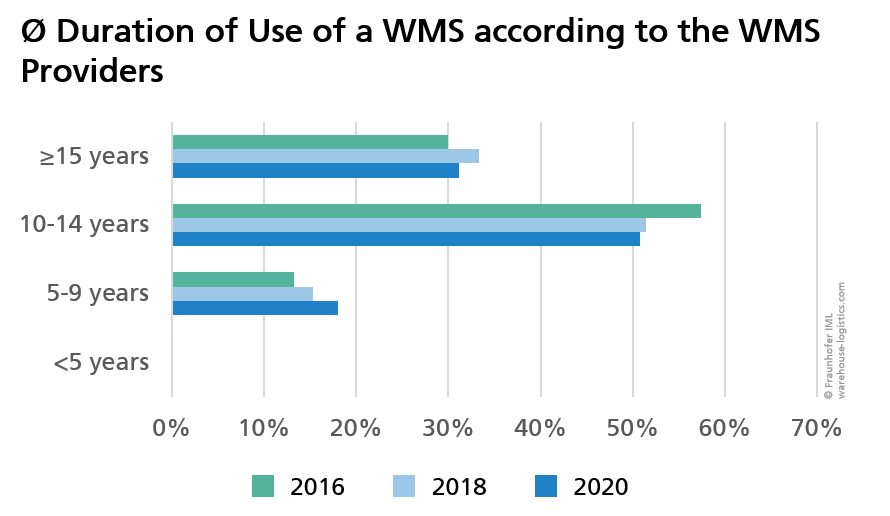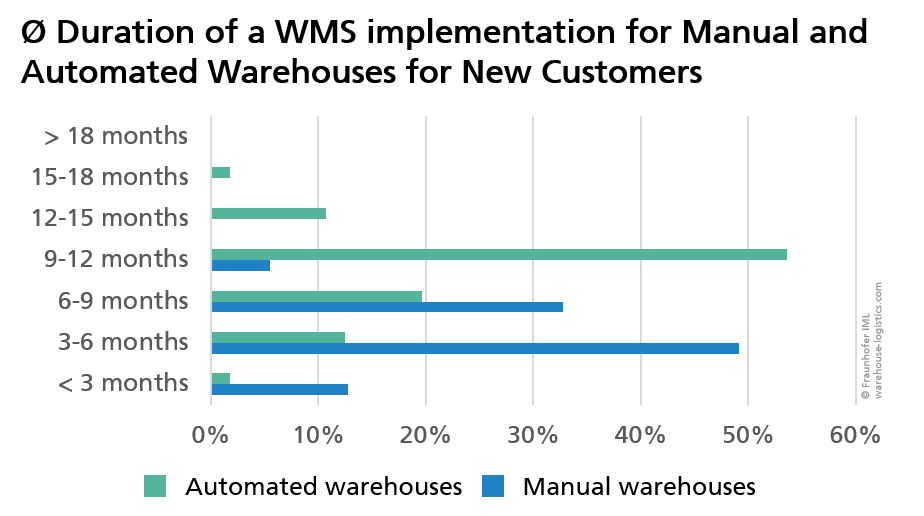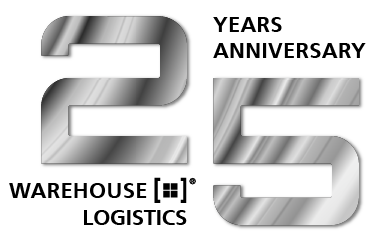The WMS Project
Selection and Implementation of a WMS

With the purchase of a WMS comes a long-term relationship between the user and the WMS provider. More than 80 percent of WMS vendors claim that the average period of use of their WMS is ten years or longer. Thus, the "Selection and Implementation of a WMS" project is of strategic importance.
In addition to the selection of a WMS that provides the best functional support for operational processes and the necessary architecture for integration into the existing IT environment, the challenge also lies in taking into account the future requirements of the WMS user for the operational control concepts and business processes. Even the decisions made about maintenance and licensing can have a large impact on the investment and operating costs. The "chemistry" between the WMS user and the WMS provider is also an important consideration when selecting a WMS given the average length of the business relationship. The careful selection of a WMS provider is the most important step towards a long business relationship and a high degree of customer satisfaction.
Project Life Cycle

When the goal of a project is to implement a WMS, the long life of a WMS makes it necessary for special attention to be paid to all of the phases of the project that lead up to the selection of a WMS provider. In these phases, the course is set for long-term successful operation and optimum support of the logistics processes by the WMS.
Focussed and comprehensive project management is essential to the success of the project. The logistics processes have to be carefully planned in advance and the most suitable WMS provider, whose product provides the best support for the current and future processes, has to be selected. “Quick shots” usually results in project delays and high costs.
Experience has shown that it makes sense to bring in external WMS experts to help with the selection and implementation of a WMS in order to avoid the stumbling blocks that usually occur at the beginning of a WMS project. Fraunhofer IML offers its expertise to help both WMS users and provider with WMS projects.
The Project Phases
1. Kick-off "WMS Project"
The starting point of the WMS project is a kick-off meeting to determine the members of the project team and agree on the steps, implementation timeframe, project goals, and the required formalities.
2. Define the Requirements
The definition of the requirements begins with an analysis of the current situation and is followed by an analysis of the weak points. The results of both of these analyses are used as the basis for the creation of the target concept.
3. Create the Tender Documents
The target concept is formally written down in accordance to all applicable standards, guidelines, laws, and any internal regulations. The requirements for the future WMS are summarized through the definition of the key performance indicators and the creation of the requirement specifications. The requirement specifications define WHAT functionalities the WMS must provide.
4. Award the Contract
Before a contract can be awarded, the tender documents have to be sent to the WMS provider whose systems meet the minimum requirements or the K.O. criteria – the so-called "qualified sending of the tender documents". The »Logistics IT Online Selection« service offered by Fraunhofer IML can be used to select in advance the WMS provider who best meet the specified requirements. In addition to functionality, other factors also need to be taken into consideration such as the corporate structure of a WMS provider.
Since the business relationship between a WMS user and a WMS provider is usually long-term, there also has to be good "chemistry” between them.
After the tender documents have been sent, the WMS provider participating in the tender process should be given the opportunity to visit at least one of the customer’s warehouses. This usually results in the accurate, fast, and high quality preparation of the tender by the WMS provider. This visit to a warehouse also gives the customer and the provider the chance to get to know each other.
After the call for tenders, the next step is to compare them with each other in a structured way. In the final step of this project phase, the sum of the impressions, experiences, qualitative evaluations, and, last but not least, the results of the price negotiations result in the selection of a WMS provider whose WMS will be implemented in the next phase of the project.
5. Implementation
After a WMS provider has been selected, the next phase of the project is the "WMS Implementation" phase, which involves the creation of the functional specifications and the implementation of the system. The functional specifications specify HOW the requirements in the requirement specifications have to be implemented. They are the basis for all of the tasks performed during the implementation phase and are an integral component of the contract between the customer and the contractor.
6. Commissioning
The project phase "Commissioning” is divided into laboratory work and training, which both happen at the same time. The laboratory work involves making the transition from the old WMS to the new WMS by performing tests under laboratory conditions but using real data. The changeover from the old WMS to the new one can happen by allowing both to operate at the same time or by making a direct changeover.
7. Acceptance
In the final project phase of "Acceptance", performance, acceptance, and availability tests are used to test the functionality described in the requirement and functional specifications as well as the response times, breakdowns are simulated, and emergency strategies are reviewed.
The WMS goes live when all of the promised functionality of the WMS has been tested, the project phases have met the requirements, and the acceptance report does not have any mistakes or gaps and both partners have signed it.
